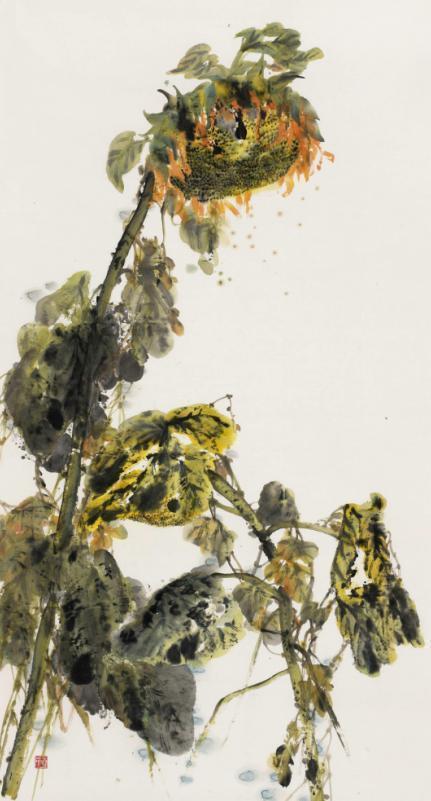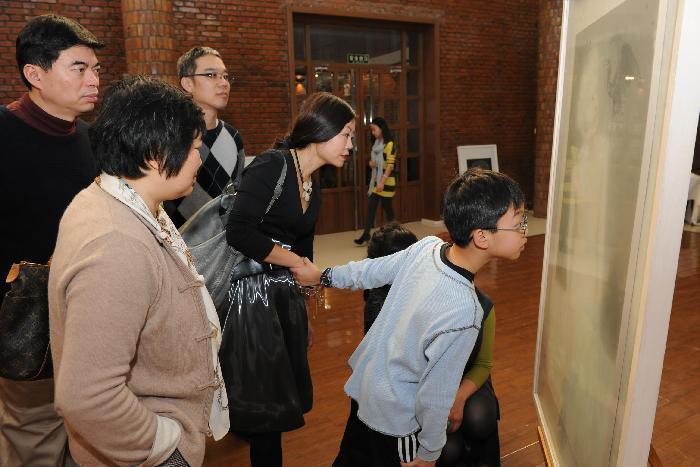Ink and water artwork, like any other kind of art, has a universal spiritual value that helps its development over time. Currently, we are now in a period where artistic language is evolving and artistic concepts have developed to the point where they are breaking through, and ink and water artwork is an important part of this process. A key part of the process to complete this transformation is when the artists construct and reorganize traditional ink and water artistic styles into their own signature style. These new styles create more possibilities and pluralism for the artists to imagine new way to utilize the ink and water artistic medium.
Ink and water artwork is an important part of the historic Chinese art culture, and it represents not only a spiritual reflection and an appreciation for beauty that is steeped in Chinese art, but it also sheds light on the spiritual characteristics, connotations, morality, and disposition of Chinese artists. Ink and water artwork is a significant part of Chinese culture, and it is a key cultural symbol that displays the overarching spiritual reflection and appreciation beauty that exists within Chinese culture. As the Chinese cultural environment continues to develop, ink and water art will take on an even more important and expanding role in showing Chinese culture through art.
There will always be discussions about how direction Chinese modern art should develop, but how exactly to define what “Chinese art” is as China takes on a more prominent position globally is the question everyone is paying attention to. After a long period of exploration and discussion, it appears that Chinese art is reversing course and transforming traditional Chinese art culture through utilizes ink and water in new ways.
As cultures of the world intermix and create new never before seen spiritual orientations, the ways that ink and water are used will be used in new ways, and these mediums will be an even bigger part of Chinese art culture. However, if traditional ink and water art does self-examine, it will not be able to adapt to the combination and conflict of Chinese and foreign cultures, and it will be marginalized. Yet, if contemporary ink and water artwork continues on with the current Chinese societal trend and it expresses the thoughts of the Chinese people. It will be inevitable that ink and water artwork will transcend traditional Chinese art to be part of the contemporary Chinese art scene. Ink and water art will not lose its own distinctive style when the transformation from traditional to contemporary art occurs because it has a cultural position and inner normative system that will allow it to keep its own identity. In fact, the deconstruction and reorganization of ink and water art will actually allow it to maintain internal continuity and possibility, which will facilitate the transformation, and will dictate the direction and development of ink and water art as it transcends from being “traditional” into “contemporary”.
At present, modern Chinese culture is still in a development process that will be a diverse hybrid of traditional culture and modern sensibility. The kind of ink and water art that emerges from this hybrid will be far beyond conception, style, and medium would be on its own, and it will break from the norms that are inherent within traditional ink and water art. Moreover, it will take in human thought, nature, and the environment more than traditional ink and water art does, and it will provide fertile soil for the growth of the contemporary ink and water art. Yet, even thought his transformation will be extremely interesting to watch occur, it will be difficult for the artists to complete their personal transformation from traditional to contemporary ink and water art, but there is always the chance that as artists make an effort to transform they will be able to create unconventional art that even if it does not transcend it will provide a new perspective. Thus, by utilizing traditional culture and rules for artistic language artists can create new artistic concepts using ink and water even if the artists are not able to transform the medium from traditional to contemporary.
This exhibition features 11 artists that grew up in the 1970s or the 1980s, and their childhood environment and their personal perspective gives their ink and water artwork an interesting perspective. These artists are conscious, active, and comfortable enough to combine different styles and mediums to create their art. Even though these artists have divergent boundary points and styles, they are all connected by the fact that they all are taking a creative look at what they think the future will be like. They each focus on the close ties between the ink and water and contemporary Chinese culture. They each also emphasize the close relationship between contemporary ink and water art and traditional ink and water art, which allows them to create art that can be differentiated from traditional style Chinese art and western style art. These artists have been selected from many applicants for their ability to show something different in ink and water art, and thereby, create new modern ink and water art. In addition, they exhibition provides some innovative architecture to show their contemporary aesthetic and values by creating a spiritual fulcrum that replaces traditional ideas. These contemporary ideas help them formulate their own individual artistic language and schema, which allows them to express their personal aesthetic and creative spirit.
Many artists are familiar with the current trends that are developing contemporary ink and water art, and they are attempting to make their mark in this trend by exploring concepts that are inherit within the medium to cultivate their own distinct style. Often they are able to do this by absorbing western art ascetics into the Chinese art ascetic in order to try to create something new using the ink and water medium. These artists are able to move beyond the concepts, formulations, techniques, and the language of traditional ink and water art, in essence make that art look dated. These new artistic expressions using ink and water will allow the medium to evolve into an art form that has a strong connection to and expression of the current social climate, which will allow the medium to transcend traditional concepts into contemporary art.
Finally, if the concept of “contemporary” ink and water art can include both traditional ideas and current social concepts it will be able to connect to the sensibilities of today’s art fans. This movement towards making ink and water art more contemporary is raising the bar for ideology and media styles within the medium, and allowing art critics a new way to evaluate this medium. This ability is creating a dynamic concept for the future, even if there is no exact answer. Come experience the possibility by joining at the “Yi Guan” Exhibition.









